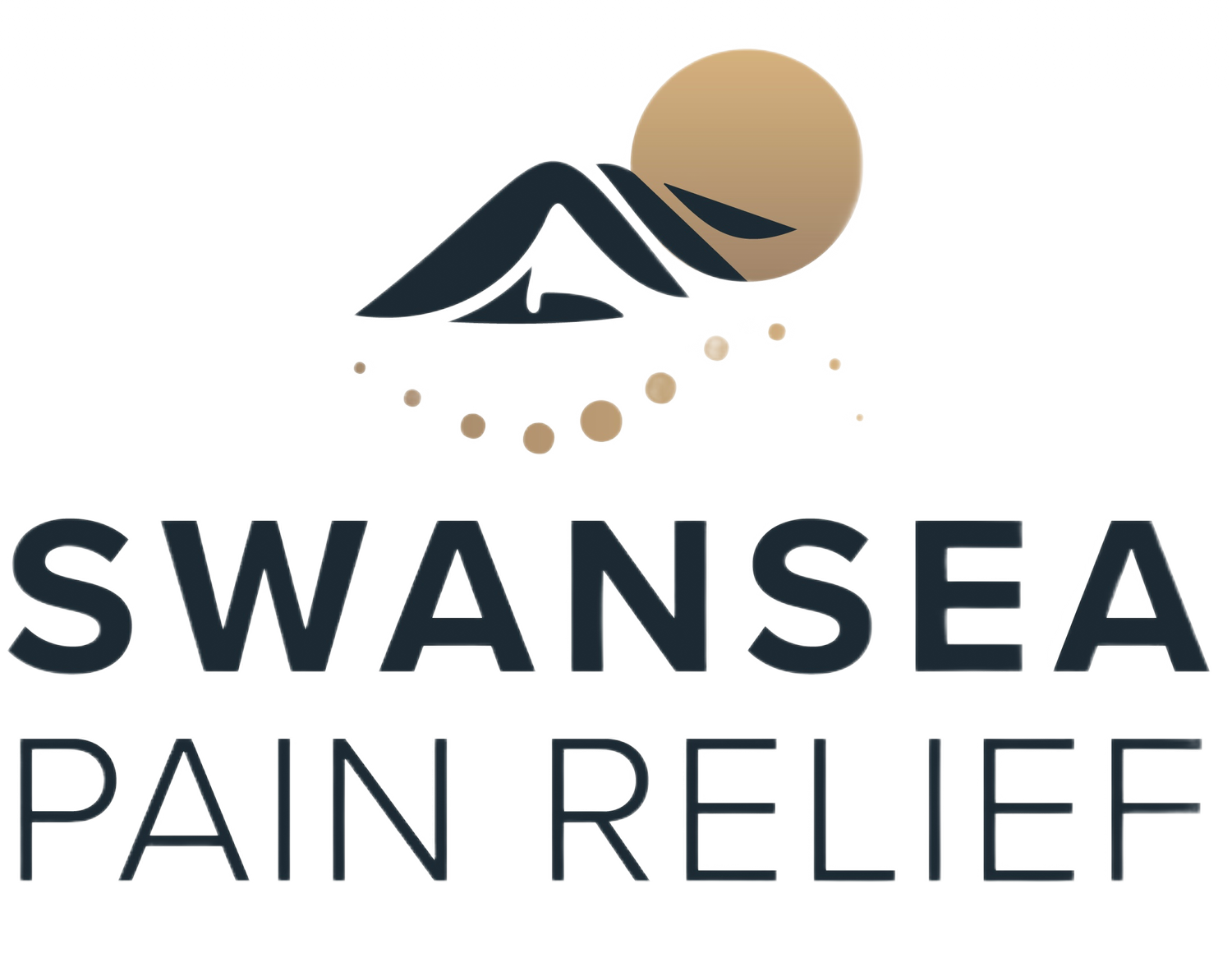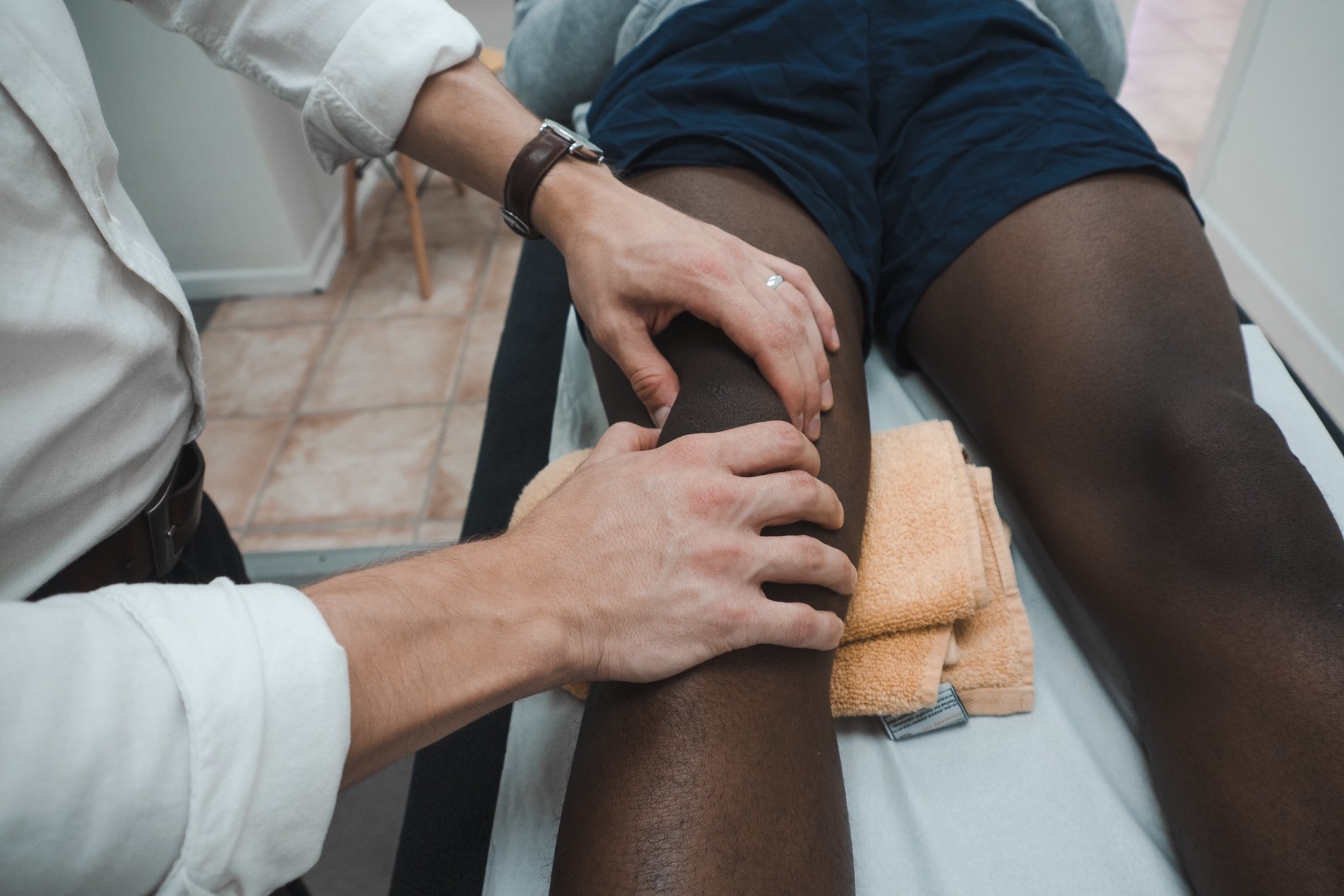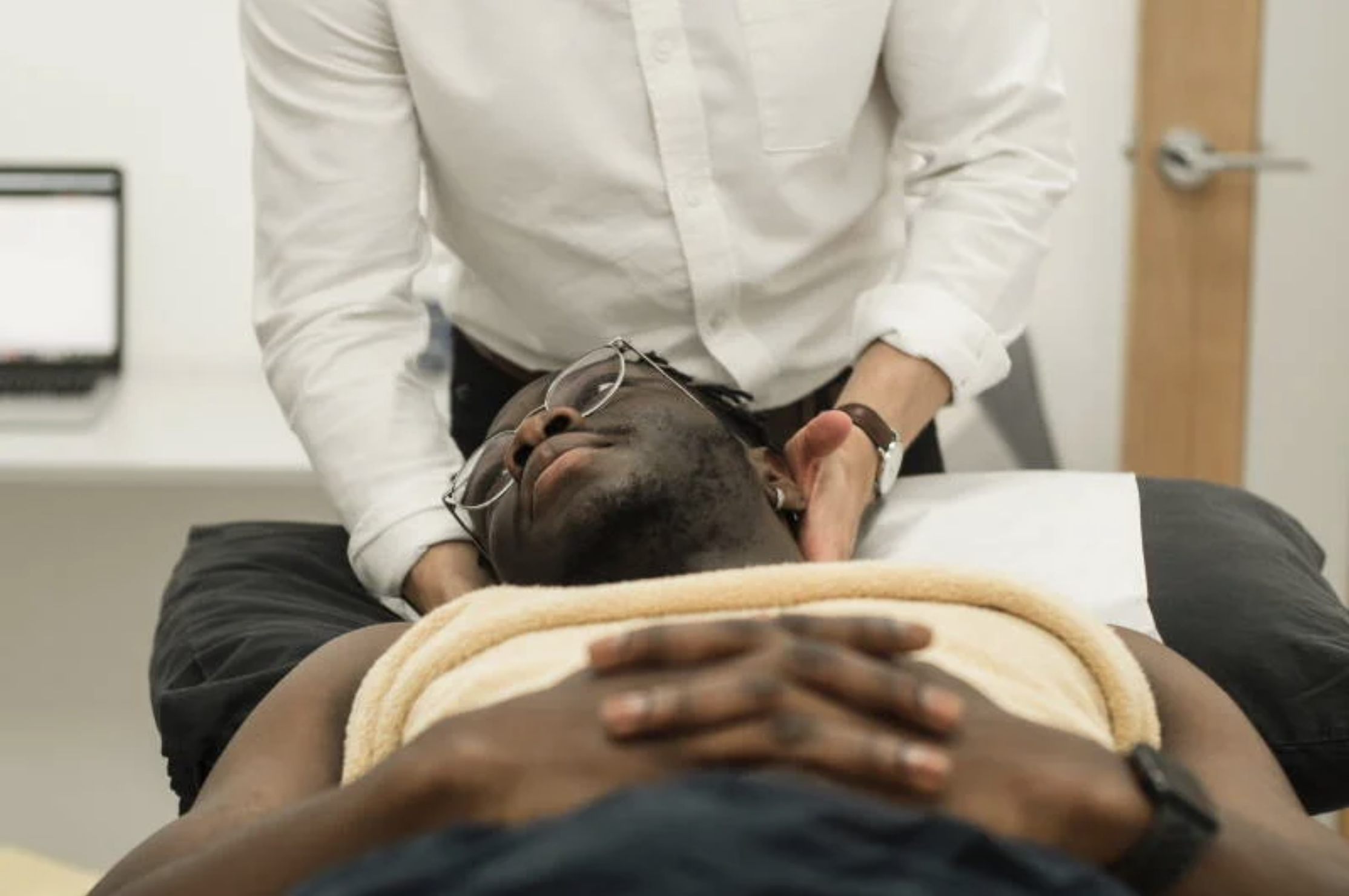Welcome | Zoe Rattley Osteopath
NEW OSTEOPATH
We are really pleased to welcome Zoe Rattley to the team at Western Bay Pain Relief. For those who don’t know, Zoe is a highly qualified osteopath. We are confident that she will be a huge asset to the clinic. To welcome Zoe, we thought it would be useful to know a bit about her.
Zoe was born in Caerphilly, Wales and throughout adolescence, quickly realised she wanted to become a musculo-skeletal injuries practitioner. She investigated careers in Physiotherapy or sports therapy but ultimately decided on becoming an osteopath.
During her four years studying to a Masters in osteopathy at Swansea University she met her now husband Ben Rattley. As part of her final research project, Zoe reviewed the importance of empathy within patient care encounters which has continued to be a passion within her clinical practice.
Since qualifying, Zoe has worked in Port Talbot, Caerphilly, Cardiff and Swansea. She has gained a vast knowledge and has begun to develop specific interests in the field. Namely, Women’s health, Sports injuries, and Chronic pain management.
Her treatment style is evidence informed and is guided by treating various bodily structures to encourage pain free motion and function.
She is now available for osteopathy and sports massage appointments. If you have any questions for Zoe, please feel free to contact us.
Increasing Mobility | Ben Rattley Osteopathy
“I want to be able to touch my toes”
MY TOP TIPS FOR INCREASING MOBILITY
As an osteopath, i hear this on a weekly basis: "I want to be able to touch my toes" "I want to be more flexible" "I want to be more mobile". SO how do you do it?
Warm up before you stretch
It's so important to warm your muscles up prior to applying stretch. Stretching 'cold' muscles will not only reduce the effects of mobility based exercise but can lead to injuries such as strains. In order to warm yourself up, i would always recommend a dynamic based start to your activity. Gentle leg swings, Shoulder rolls and jogging on the spot etc...
Perform stretches little and often
Just like with any training it is all about finding a fine balance. your training needs to be progressive but it is all too easy to 'over do it'. When muscles are over-stretched or over worked, it limits the amount of time in which muscles are able to repair themselves and adapt to the required flexibility. Therefore, ensuring that mobility training is accompanied by regular rest days and different forms of strength training.
How long to hold static stretches?
There is a diverse amount of research available but generally it is advised that static stretches are performed and held for 30 seconds. Once your muscles adapt to the stretch period it can be extended. I recommend regular incremental increases of 5-10 seconds. Always exhale as you reach into the stretch and follow this with a regular breathing pattern.
Receive manual therapy treatment
Manual therapy is a great way to improve your mobility and performance. Treatment can not only assist in passive stretching and therefore assist in increasing your mobility. Additionally, manual therapy encourages tissue healing which reduces the risk of injury and maintains good muscular health. Your manual therapist will utilise stretching, massage and manipulation to help you achieve your mobility goals.
Knee Pain | Ben Rattley Osteopath
“Knee pain can make moving around or even standing up straight difficult”
BACKGROUND TO KNEE PAIN
When you have knee pain, it can be difficult to move around or even stand up straight. But there are many ways to help ease the pain and prevent further injury. Read on to learn more about knee pain treatment options.
Knee pain is often caused by an underling injury, such as a fall or sports injury. However, It can also be due to conditions such as arthritis, which causes inflammation within the knee joints. Knee pain can range from mild discomfort to severe pain that interferes with daily life. But one thing is for certain, when you have knee pain, you’ll be keen to reduce it as soon as possible! So here are some tips..
Be clear, be confident and don’t overthink it. The beauty of your story is that it’s going to continue to evolve and your site can evolve with it. Your goal should be to make it feel right for right now. Later will take care of itself. It always does.
Manual therapy (Including Osteopathy, Massage)
This is where we can help! Manual therapy is a great way to help reduce knee pain and restore knee mobility/motion. Our specialist approach will create a treatment plan which aims to best support you in your pursuit of pain relief. We will utilise pain free massage, mobilisation and stretching, to give your knees the best chance of recovery.
Ice Therapy
One of the simplest treatments for knee pain is ice therapy. This involves applying cold to the affected area. You can use anything from a bag of frozen peas to a purpose made ice pack, as long as its cold! Apply the cold to the area for no more than 20 minutes.
Heat Therapy
Another option for treating knee pain is heat therapy. A heat pad or hot water bottle can be used to warm the affected area. Once again, hold the warm compress on the area for up to 20 minutes.
Exercise
If you have knee pain, you might not be able to exercise as much as you would like. However, there are still plenty of things you can do to keep yourself active. Try walking instead of driving when possible. Walking also helps strengthen muscles that support your joints. If weight bearing activity is too painful, try walking or swimming in your local pool. Finally, tailor-made exercise programme which are provided at the clinic will assist you in getting back to be pain free movement.
Medication
As osteopaths we are not able to advise on medication so we would always advise seeking advice from your GP or pharmacist. There are several different medications available to treat knee pain which may help you short-term within pain management.
Neck Pain | Ben Rattley Osteopath
“The cause of your neck pain”
THE CAUSE OF YOUR NECK PAIN
Neck pain is a very common complaint at our clinic. It can be caused by a variety of anatomy. Most frequently, it is pain because of injury to local muscles and ligaments. However, in some cases it can be linked to the spine and adjacent nerves.
With the average head weighing around 5kg the neck is subject to continual pressure due to supporting this load. Tension or strain in the upper back and neck muscles can begin to cause pain as a result. In some cases, headaches can also arise from the muscles around the base of the skull and neck. These are called cervicogenic headache’s and may be helped by treatment in an osteopathy session.
The neck anatomy is a complicated structure due to the vast number of nerves, joints, muscles, tendons, ligaments and discs. All of which have the capacity to produce pain.
When you arrive at our clinic to receive treatment for neck pain, we will complete a thorough review of your symptoms as well as performing various tests to ascertain the root cause of your pain. By treating the cause of the neck pain, we have a much more favourable prognosis in helping restore you back to being pain free.
If you have any questions or would like to discuss your neck pain, call us on 01792 974135 or contact us via our Instagram or Facebook page.
Low Back Pain | Ben Rattley Osteopath
Low back pain is unfortunately, far too common.
LOW BACK PAIN IS FAR TOO COMMON
Over 80% of adults are likely to experience low back pain at some point in their lifetime, it makes it one of the biggest causes for time off work and disruption to well-being.
Low back pain can be divided into two key categories: Acute and Chronic. Acute low back pain can last from a matter of days to weeks. Despite there often being a traumatic onset, it can occur without any obvious reasoning. Chronic low back pain is anything that lasts in the excess of 3 months and as with acute pain, it can arise from a historical event or for no apparent reason.
Low back pain is a heavily contentious area of research due to the increasing prevalence of “Non-Specific Low Back Pain” (NSLBP). NSLBP essentially means, that there is no identifiable cause following examination and imaging. This makes it a difficult condition to manage and requires a multi-modal approach to care.
With low back pain there can be natural progressions with the pain character and presentation. Some low back pain may refer pain into the buttocks, hips and legs. This is where the term ‘Sciatica’ or ‘Sciatic pain’ derives from. Sciatica is a symptom of any compression or irritation of the Sciatic nerve and if you’ve had sciatica, you won’t need me to unpack or attempt to describe the discomfort. Some common phrases used in reference to Sciatica are ‘Tooth-ache like pain’, ’Burning’, Shooting’, ‘a dull ache’. It’s important to mention that not all low back pain leads to sciatic nerve symptoms, but it does hold a close affiliation.
IMPORTANT
If low back pain is accompanied by symptoms down both legs, any issues with bowel and bladder habits, a loss of power in your legs or a loss of sensation around your buttocks and saddle region, you should immediately go to A & E.
Factors that may contribute to the onset of Low back pain.
A change in exercise or physical work
Lack of sleep
Stress
Trauma
Beliefs or attitudes towards health
The National Institute for Health & Care Excellence (NICE) sets guidelines based on the available evidence for what you can do to help your back pain:
Exercise – The majority of people with low back pain will actually have a strong back. It is not a fragile structure. It is anatomically well-supported. Therefore, it is really important that you continue moving despite there being pain. However, I am a strong agonist towards ‘No pain no gain’. We know from physiology that inducing yourself into pain unnecessarily has no clinical significance for improved health outcomes. We would suggest moving ‘little and often’.
Medication – As health professionals we seek to work in harmony with fellow healthcare clinicians and therefore, support their advice. If you have been prescribed pain relieving medication, we would advise continuing to follow your prescription.
De-stress – stress influences our bodies physiological level and psychologically to our mental health. Stress can often increase the perception of pain and increase sensitivity. Finding a therapeutic activity, sleeping well and taking time away from stresses can all help with managing low back pain.
Manual therapy – This is where we come in! Utilisation of various hands-on techniques (Manipulation, massage and stretching) can all help reduce pain and inspire confidence in a return to normal activities. With our hands on treatment, we often promote movement which is a vital aid in recovering from low back pain.
Heat/ice – Both of these ailments can help reduce low back pain. The evidence supporting either is sparse and it therefore suggested that you use which ever one you prefer.






